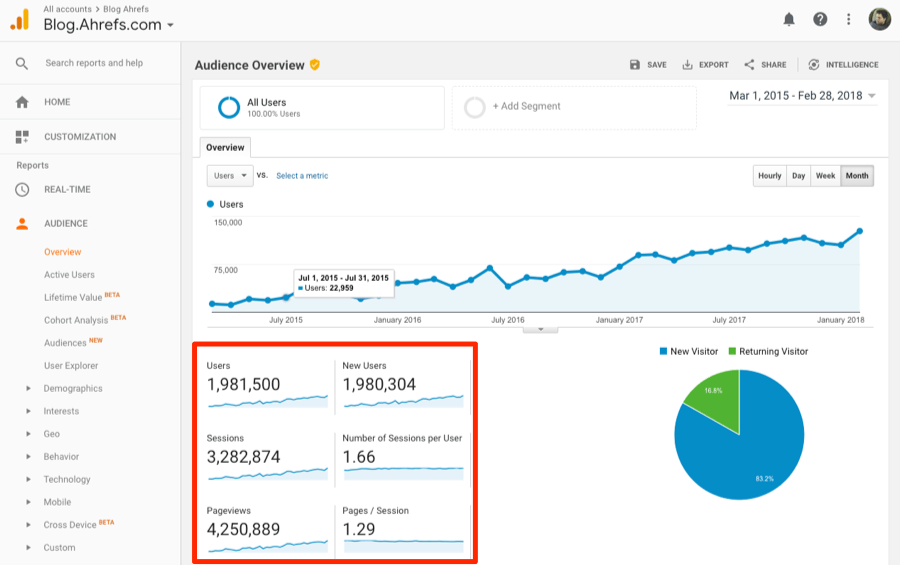How to Survive a DDoS Attack?

If you are tasked to create a list of the worst threats to the virtual world today, the Distributed Denial of Service (DDoS) would certainly top it. With the potential to leave a website useless, DDoS attacks have taken the virtual world by storm. There is no other digital threat that can match the scope of DDoS in today’s world.
The DDoS attacks flood their target server with an immense amount of requests until the flow beats the network’s capacity to deal with them. The way it carries out the assault is the core reason why cybercriminals with political, financial, commercial, or even personal motives love it.
Rise of More Potent DDoS attacks
Despite the wealth of information available to individuals and businesses on the internet today, not a lot of them actually pay heed to this unique kind of threat. The overall negligence has allowed cybercriminals to further equip the DDoS attacks and increase their quantity. This year alone has witnessed an unprecedented rise in the number of these attacks.
According to a recent report by NexusGuard, the number of DDoS assaults jumped by a whopping 542% during the first quarter of this year. What is more threatening is the fact that these attacks are getting stronger and more potent than ever. Recent research found out that as many as 17,700 attacks are carried out worldwide every day.
Does DDoS Protection Exist?
Many believe that it is impossible to have DDoS protection. Although it is very much the reality we know, you can still take a number of precautionary measures that can save you from falling prey to these assaults.
Let’s first have a look at the relevant information about what DDoS is and how cybercriminals use it to their benefits.
What is DDoS?
The Distributive Denial of Service (DDoS) is one of the most lethal forms of attacks that can disrupt your website, network, or system and strangulate it to a standstill.
When we take a look at the conventional type of Denial of Service attack, we realize that it generally depends on a single internet-connected device to target a server’s bandwidth, thereby making a website inaccessible.
A DDoS is very much similar to its conventional type however it carries out attacks from multiple internet-connected devices. The number of these internet-connected devices can go up to hundreds or beyond thousands. These multiple devices are spread across the world which makes it very difficult to identify the root cause. These internet-connected devices are also known as a zombie army. The group of machines acts like a botnet that is affected by malware (scan your website for malware detection) and is capable of affecting and controlling the target remotely. Once you are attacked by DDoS, there is nothing much you can do about it because you never know the original source of the attack. In fact, there are too many sources that you will have to block to stem their flow, which is quite an unthinkable task.
How DDoS Functions?
There are many kinds of DDoS attacks but they all are aimed at disrupting a network or a website. The idea is to make a certain website or network unavailable to legit users.
Let’s find out how a traditional DDoS attack looks like.
Unleash the Malware Beast
It all starts by unleashing the beast of malware. Cybercriminals use various tactics and methods to spread the infection. The most commonly used is email attachments. They send emails with malicious attachments to a list of target users. These emails are written in a way that entices the recipients to open and read them and click on the “REWARD”. Once they click on the malicious file, they are doomed. Some of the other commonly used methods include links in social media posts and drive-by downloads.
Awake the Sleeping Beast
The most interesting thing about malware is that they stay dormant until their time to destroy comes. It means hackers activate them when required and they start their destruction without the knowledge of the target. This way, cybercriminals turn their targets into a botnet as if they are acting as a team to achieve a collective goal.
-
Build Team and ATTACK!
Once cybercriminals build their team, they unleash the botnets on to their targets, all at the same time. They are generally is such big numbers that make the job of network security officials a challenging one. It is almost impossible to stop an army of botnets from disrupting the websites.
-
Exaggerated but Illegal Traffic
Once the army of botnets attacks its target, the website starts reporting an amazing amount of traffic. However, this traffic is not going to do any good to their cause, rather this illegal traffic strangulates the website to death. The worst thing is that the amount of traffic is getting bigger in size. For example, in the first quarter of 2017, around six in 10 attacks surpassed 1GBPS, the ultimate point where most of the websites are forced into the darkness.
Terminated
The last but not the least thing in such an attack is that the target is terminated and dysfunctional. An offline website that can no longer go about its daily business. This is the ultimate peak of a DDoS attack.
The unfortunate thing is that cybercriminals can skip the first step completely and move straight to attacking their target. The rise of booters has given everyone the power to carry out a DDoS attack. Booters are termed as the services that give paid members the power to initiate a DDoS attack. The worst part is that these booters are absolutely pocket-friendly. Anyone can disrupt a non-government site at only $400 or just about 17 bucks an hour.
Targets Lose Big Money
Companies are losing big money in getting themselves ready to face DDoS attacks. They lose more money when they get attacked brutally. According to a recent study, which involved 1,010 enterprises, the peak-time DDoS disruptions can cause revenue losses worth over $100,000 an hour.
Types of DDoS Attacks
Before we go any further, it is important to mention different types of DDoS attacks. These attacks can be categorized on the basis of types and volume of traffic they unleash on the targets. Let’s catch a glimpse!
-
Volumetric Attacks
Volumetric attacks are the most common types of DDoS disruptions in today’s world. This kind of attack depends on a botnet to generate and direct a massive amount of traffic to a website. Once they overwhelm the bandwidth of their target website, network operations are brought down to a standstill (go offline). DNS Amplification, TCP Flood, UDP Flood, ICMP Flood, and many others are the most used examples of volumetric attacks.
-
Protocol Attacks
The protocol attacks are aimed at exploiting server resources by compromising vulnerabilities in the Layer 3 and Layer 4 protocol stack. The most common examples of these attacks are Ping of Death and Syn Flood.
-
Application Layer Attacks
These are the most uncommon types of DDoS attacks because they are technical and complex in nature. Not everyone out there can carry out an Application Layer Attack. However, these are the most difficult customers to handle. These attacks consume every single resource available on the server by attacking web application packets and disrupting data transmission.
Motives behind DDoS Attacks
There are many motives behind carrying out DDoS attacks, mostly less evident. Having a sneak-peak at the history of these attacks does offer us some insight into their patterns and eventual motives.
Social Activism
Although it is not the ultimate motive behind DDoS attacks. This one is perhaps the only instance of a crime aiming at forcing something good. Certain strata of DDoS attackers carry out attacks to force organizations to function ethically or go about their job seriously. At the end of the day, these attacks are illegal, even if they are aimed at getting a good thing done in society. The most renowned such attack was reported in 2008 when a hacktivist group Anonymous attacked the Church of Scientology for their alleged abuse of copyright laws.
Extortion Money
We all know that most of the crimes are carried out with an aim to earn easy illegal money. It wasn’t used to be the ultimate motive behind DDoS attacks but now cybercriminals are exploring new ways to monetize their attacks. The most common of these ways is through extortion. In this way, cybercriminals demonstrate their might by launching a smaller attack on their target and sending them a ransom note, thereby demanding a payment in Bitcoin. They discontinue the attack if the target bows down to their demand. However, if they don’t pay the extortion money, the attack gets bigger and horrific.
There is no hard and fast rule when it comes to extortion demands by hackers. However, mostly they demand money in four of five figures. Some of the biggest ransom demands in six figures. For example, the cybercrime group Armada Collective demanded $315,000 from seven South Korean banks in June 2017.
-
Politically-Motivated
DDoS attacks have become a lethal weapon for its ability to disrupt even the most critical services, including healthcare and government services. This is why many cybercriminals have also used them over the years. However, most of these attacks are state-sponsored, which means the attackers have access to a huge amount of resources.
If you could recall the 2014 Occupy Central movement in Hong Kong, we must tell you that DDoS attacks were an active part of that politically-motivated campaign. Apply Daily and Pop Vote were the two main supportive websites of the movement. Both of these websites were pinned down by DDoS attacks up to 500 Gbps. These were the largest DDoS attacks at that time.
-
Public Fame and Excitement
There is a bunch of attention-seeking cybercriminals who carry out crimes like DDoS attacks only to get fame or notoriety. These individuals are only interested in getting recognized for carrying out these attacks. They love to be admired within their hacker and cybercriminal community.
-
Commercial Jealousy
Many businesses are over-ambitious when it comes to achieving the pinnacles of success in the shortest possible time. They go up to the extent of hurting the websites of the competitors through DDoS attacks. Just imagine, top stores are rolling out new discounts and varieties on Black Friday sales when a similar but smaller business uses DDoS attacks to hurt their websites just at the time of the new discount rollout. This is going to hurt the top business big time and hurt people’s confidence in the brand. Secondly, it allows the smaller business to launch its own sales campaign during that time to reap the benefits. However, it is a crime and must be avoided in any circumstances.
Is there any DDoS Protection Out there?
Now here is the million-dollar-question. Is there DDoS protection out there? Well, to be honest, we don’t exist in an ideal world that is free from criminal activities. The same is the case with the DDoS attacks. No business can completely stay afloat the dangers of DDoS assaults in today’s world. However, precautionary measures and a proactive approach can go a long way in ensuring that you stay at bay from these criminals. Businesses should invest in adopting the best IT security practices and installing the top security protocols to make sure they have done their homework against the threats.
Here are a few signals that can help you identify a DDoS attack on your digital asset.
-
Traffic Monitoring

This could be your first victory against cybercriminals if you have the arrangements to keep a constant eye on your website traffic. The monitoring allows you to identify instantly if and when a DDoS attack starts heading your way. The proper monitoring gives administrators or managers a clear idea of the general average traffic on the website. So, when a DDoS attack starts and traffic starts to mount abnormally, this is your chance of dealing with it instantly. You can also set different traffic thresholds and create alerts so that you get an instant alert when a DDoS attack starts.
-
Discuss with Your ISP
You rely heavily on your internet service provider to keep things in good shape as far as your website is concerned. This is why you should always conduct prior research on an ISP’s ability to deal with different digital threats like DDoS attacks and ransomware. With DDoS protection in mind, you can discuss with your ISP about how equipped it is to handle this kind of attack. This should be an important factor in your ISP selection process. If you sign up with an ISP that doesn’t provide DDoS protection, you should still contact it when you’re attacked by DDoS handlers. This would help you in establishing the fact if the ISP has also been hit by the attack. You can also ask it to reroute the traffic so as to reduce the extra load on your website.
-
No Harm in Purchasing Extra Bandwidth
As a matter of fact, this would not help prevent a DDoS attack from occurring. However, purchasing extra bandwidth would give you that all-important precious extra time which can allow you to deal with the attack effectively. As mentioned above, DDoS attacks affect a website by flooding extra traffic. Investing in extra bandwidth would allow your website to absorb a part of the pressure and give your network officials the time to deal with the attack.
-
Invest in Cloud-Based DDoS Protection
The cloud-based DDoS protection has emerged as one of the better solutions for businesses in recent times. It is an expensive affair but they have the ability to mitigate the attacks with an effective layer of protection. The cloud-based protection offers massive bandwidth that is usually enough to handle even larger DDoS attacks. It can also filter out fake traffic and only give legit traffic the way to the website.
Now, even Google has rolled out its own DDoS protection solution, named Project Shield. The company offers it free of cost for human rights, news, and elections monitoring websites. Project Shield goes about its job of protecting your websites from DDoS attacks by filtering and caching the illegitimate traffic.
-
Periodic Software Updates
It is indeed one of the most critical parts of any business’s anti-online-threats policy. If a company’s software solutions are periodically updated, they present a better chance of dealing with the DDoS attacks. Failing to periodically updating your company’s software would only give cybercriminals a great chance of intruding into your security zone and go about their job rather freely. Always keep it in mind that whether you update it or not, criminals do update their systems.
The Final Word
There is no question about DDoS attacks being the most destructible threat to any business in the world, irrespective of its size. As cyber criminals up the ante, it is high time for businesses to ensure proper security arrangements and protocols installed on their digital assets. Investing in the best DDoS protection solutions is your best foot forward in this battle that is likely to continue for the years to come.


